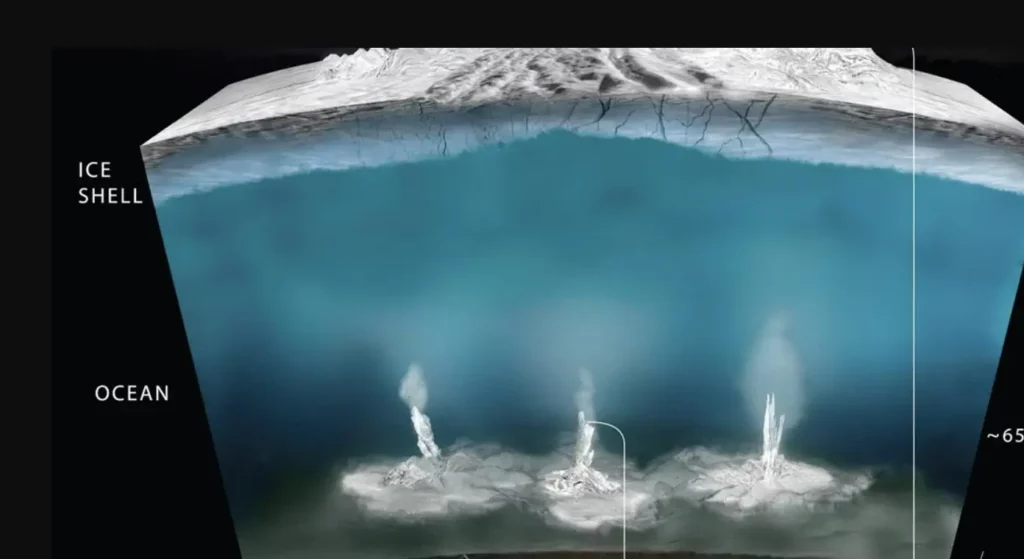New research has revealed that Saturn’s moon Enceladus could contain fundamental information to understand the origin and existence of life. Although direct evidence of life has yet to be found on this distant satellite, NASA scientists have discovered intriguing evidence that suggests Enceladus could be a promising candidate for future research.
The Cassini mission, which concluded in 2017 with the controlled disintegration of the spacecraft in Saturn’s atmosphere, provided a set of valuable data that is still being analyzed in detail. One of the most fascinating aspects of this mission was the study of the enormous geysers of water vapor that emerge from the surface of the aforementioned satellite. These watery, carbon -rich jets have been the subject of extensive analysis by leading planetary scientists.

In a recent paper published in Nature Astronomy , the researchers presented their most surprising findings to date. By analyzing the data collected by Cassini, they have concluded that these jets not only contain water, carbon dioxide and methane, but also a crucial molecule: hydrogen cyanide . Although this molecule is toxic to humans, it plays a fundamental role in the origin of life on Earth.
Is there extraterrestrial life on Saturn’s moon?
Amino acids, essential elements for life as we know it, are generated from organic compounds that include carbon. Hydrogen cyanide plays a crucial role in the synthesis of these amino acids, making it an essential component in the equation for the origin of life. The discovery of this molecule on Enceladus has generated excitement among scientists, as it could offer fundamental clues about the possibility of life in places beyond Earth.
Study author Jonah Peter, a Harvard University doctoral student who collaborated on Enceladus research at NASA, said: “The discovery of hydrogen cyanide was particularly exciting, because it is the starting point for most theories about the origin of life.“.
However, it’s not just hydrogen cyanide that scientists have identified on Saturn’s moon . In addition to this molecule, organic compounds, that is, molecules containing carbon, have also been found in geysers. These organic compounds show signs of oxidation, indicating the presence of active chemical processes beneath the frozen surface of Enceladus.
These processes release energy, suggesting that Enceladus’s subsurface ocean could serve as a significant source of energy for any life forms that may exist on this distant world.
NASA is interested in Enceladus
Kevin Hand, NASA scientist and co-author of the research, commented: ” Our work provides further evidence that Enceladus hosts some of the most important molecules both for creating the building blocks of life and for maintaining it through metabolic reactions .”
This fascinating discovery has prompted NASA to seriously consider the proposal for a new space mission to Enceladus, known as “Enceladus Orbilander.” This ambitious mission would involve sending a robotic spacecraft that would orbit Enceladus and subsequently land on its enigmatic icy surface. Through this spacecraft, additional data would be collected that could reveal more secrets about the possibility of life on this distant moon.
Don’t miss any of our posts and follow us on social media!
Inspenet.com YouTube LinkedIn Facebook Instagram
Source: Diariodeavisos.elespanol.com


